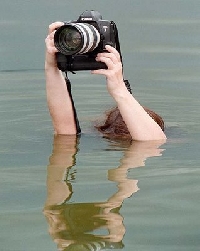The history of photography
By Catalogs Editorial Staff

How old is the art of photography? Who were some of the early pioneers?
The history of photography is based on the law of optics discovered by Aristotle. The word ?photography? is derived from two Greek words, photos (light) and graphein (to draw). Capturing immortality is the hold photography has on the modern world, whether it be the faces of famous people caught in a moment in time or indelible events that have profoundly affected our lives, such as that World War II image of the flag being raised at Iwo Jima.
Who are some of the early pioneers in the history of photography?
The history of photography marks the path of human experience, whether it is in the image of a landmark structure or a human being captured in the momentary throes of emotion. Photography as we know it began in 1827 when French inventor, Joseph Nicephore Niepce made the first photographic image of the country side at his estate with a camera obscura (pinhole camera). Although the image required eight hours of light exposure and then faded, his technique, dubbed ?heliography? (sun drawing) became the prototype for the modern photograph.
~
Another Frenchman, Louis Daguerre, also sought to capture an image and make his own contribution to the history of photography. In 1829, he formed a partnership with Niepce to improve his process and after twelve years of hard work, he succeeded in reducing exposure time to less than 30 minutes and preventing the image from disappearing afterwards. His process ‘fixed’ the images onto a sheet of silver-plated copper, which he polished and coated with iodine. This created a surface that was sensitive to light. The plate was then inserted into a camera and exposed for a few minutes, followed by a bath in silver chloride.
He named his new process after himself; the daguerrotype, and it became so popular so quickly that by 1850, New York City alone boasted of more than seventy daguerrotype studios. But the history of photography still had a long way to go and many people were a part of the evolving chain of events.
A contemporary of Daguerre, English botanist and mathematician, Henry Fox Talbot, is credited with having invented the first negative from which multiple positive prints were made. His process involved sensitizing the paper to a silver salt solution that was then exposed to the light. This caused the background to become black and the subject gray. In 1841, he perfected this paper-negative process and called it a calotype, which is Greek for beautiful picture.
Tintypes patented by Hamilton Smith and wet plate negatives invented by Frederick Scoff Archer came along in the 1850s, both marking progress in the history of photography. Dry plate negatives and hand held cameras soon came into vogue, eliminating the need for portable darkrooms. The invention of flexible roll film in 1889 by George Eastman, a dry plate manufacturer from Rochester, New York, revolutionized the concept of the mass-produced box camera (the Kodak) and made him the founder of a photographic empire.
Nitrate film was introduced in the 1920s and it is important in the history of photography because it allowed for the development of roll films. Kodachrome was the first color film to produce prints of a lasting nature. Introduced in 1935, early color prints were not stable because the dyes would deteriorate. Commercially viable color films entered the history of photography in the 1940s. The technology used to dye-couple the colors and chemically connect the dye layers together involved the most modern technology of the day.
Today, new techniques afforded by advances in modern technology can create color prints lasting 200 years or more. Computer-generated digital images using highly stable pigments can offer a permanency to photographs that would have been impossible in the past. Many pioneers paved the way for the development of this art form that has become such an integral part of our every day lives.
So, what are you waiting for?
Go take a picture and make a memory.
Popular Savings Offers




.jpg)




.png)
.png)
